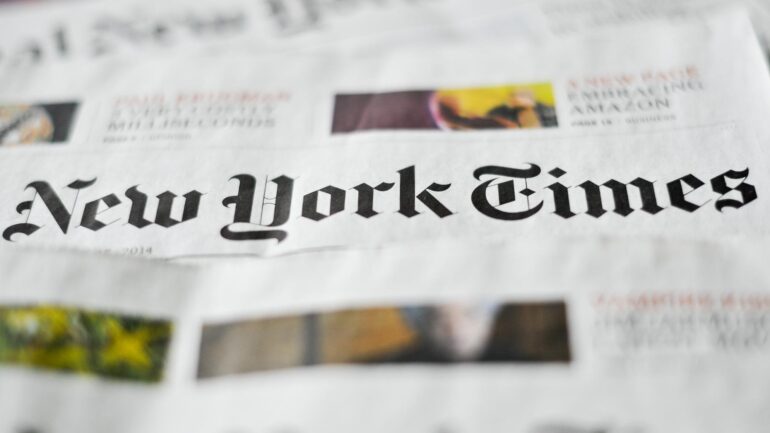TL;DR:
- The New York Times updates terms of service to prevent AI companies from using its content for training.
- Debate arises over using online content for AI training without compensation.
- Google supports open access to online content for AI training, while some brands resist.
- OpenAI and Associated Press form an agreement for AI training with content licensing.
- Google and The New York Times Co. have a collaboration focusing on content distribution tools.
- Microsoft offers revenue sharing with publishers, but details remain unclear.
Main AI News:
In the ever-evolving landscape of artificial intelligence (AI), the clash between innovation and content ownership has taken center stage. The New York Times, a stalwart in the realm of media, has drawn a clear line in the sand, highlighting its resolve to safeguard its content from being exploited for AI training without due permission or compensation.
The practice of utilizing website content to train large language models has gained momentum in recent times. Google, a frontrunner in AI research, has advocated for unrestricted access to online content for the purpose of enhancing AI training. However, a divergence of views has emerged, with The New York Times stepping forward as a torchbearer for content creators’ rights.
In a strategic move, The New York Times has undertaken a revision of its terms of service on August 3rd, introducing specific clauses to address the utilization of its content for AI system training. This content encompasses a wide spectrum, ranging from textual data and images to audio and video components. The prominent clause in the “Prohibited use of the services” section explicitly prohibits employing the organization’s content for the development of any software program, including machine learning or AI systems.
This stance aligns with a growing sentiment among content creators and brands. While AI has demonstrated its potential to revolutionize industries, concerns about the unlicensed exploitation of content have sparked a dialog on fair compensation. Notable brands such as Reddit have been resolute in asserting their desire to prohibit the use of their content to enhance products and drive profits for tech giants such as Google, Microsoft, and OpenAI.
It’s worth noting that strategic partnerships have begun to emerge as a potential solution to this impasse. OpenAI and the Associated Press, for instance, recently inked an agreement wherein OpenAI secured the rights to utilize AP’s extensive news article archive for training purposes. Similarly, Google and The New York Times Co. have established a mutually beneficial “commercial agreement” that centers around collaborative efforts in content distribution tools and subscriptions.
As Microsoft joins the fray with its commitment to revenue sharing with publishers, a nuanced picture is painted. While these steps reflect a move towards recognizing content creators’ contributions, questions linger regarding the extent of these benefits and who truly stands to gain from such arrangements.
Conclusion:
The New York Times proactive measures to safeguard its content from unauthorized AI training reflect a broader industry concern regarding content ownership. This tug-of-war between AI innovation and content creators’ rights is shaping the market’s trajectory. As strategic partnerships and clauses are established, the future landscape will likely witness a balance between AI advancements and fair compensation, ultimately shaping a new standard for ethical content utilization in the AI era.

